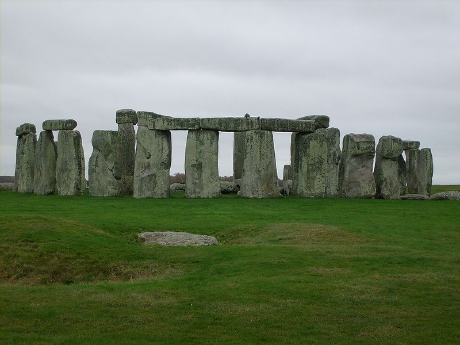 In what I think was my first GetReligion post, I mentioned coverage of the solstice get-downs at Stonehenge. Lacking from that AP article was much of a connection between the ancient circle of massive stones and the religious meaning given to it.
This week journalists had a shot at redemption with the announced discovery of Bluestonehenge, a sister site down the River Avon that was once home to 56 of the bluestones now at Stonehenge.
In what I think was my first GetReligion post, I mentioned coverage of the solstice get-downs at Stonehenge. Lacking from that AP article was much of a connection between the ancient circle of massive stones and the religious meaning given to it.
This week journalists had a shot at redemption with the announced discovery of Bluestonehenge, a sister site down the River Avon that was once home to 56 of the bluestones now at Stonehenge.
Thomas H. Maugh II of the Los Angeles Times appears to be one of the only reporters for an American newspaper on the story – nothing from The New York Times or Washington Post.
And the opening of Maugh's article offered a lot of promise:
British archaeologists have found the remains of a massive stone henge, or ceremonial circle, that was part of the ancient and celebrated Stonehenge complex, a find that is shedding new light on how the monument was built and its religious uses.
That's the opening paragraph, the lede, which led me to believe this story would be laced with religious details and discussion. Talk about a bait and switch. The article never even mentions who worshiped at Stonehenge; what these unknown individuals did there, except have ceremonies and possibly bury their dead; and why.
To be sure, there isn't agreement about exactly what happened at Stonehenge. As the Daily Mail explains in its story about Bluestonehenge: "No one knows what gods they worshipped, but the alignment of Stonehenge to the solstice shows that the Sun – and maybe the Moon – was important."
But the LA Times doesn't mention that or much else about the ancient religious rituals that took place at Stonehenge. Instead, we get buried in the details of how the site was excavated:
A team led by archaeologist Michael Parker Pearson of the University of Sheffield made the discovery while excavating in the area of Stonehenge during the last several years.
Its findings have suggested that the entire site, which stretched from the river to Stonehenge, was a religious complex where ancient peoples gathered at certain times of the year to celebrate life and bury their dead.
Some of their discoveries have also suggested that Stonehenge was a burial site for early kings.
(skip)
So far, they have found nine holes that they believe were part of a 30-foot-wide circle of about 25 standing stones.
The holes are too wide and shallow for them to have contained wooden posts.
The holes are also too small to have held sarsen stones, the larger limestone rocks that form part of Stonehenge and that were mined at Marlborough Downs 25 miles to the north.
But the dimensions correlate precisely with those of bluestones in the inner circle of Stonehenge.
Thanks for the archeology lesson – really, it's interesting stuff – but talk about a religion ghost. In this case, the reporter even pointed it out for the reader. I understand that Monday's announcement only included pieces of the Bluestonehenge puzzle; the rest will be published, I believe by the National Geographic Society, in February. But how about shining a little light on the religion behind the rituals repeatedly referred to throughout what was, in fact, not a short article?
PHOTO: Stonehenge, via Wikipedia.
